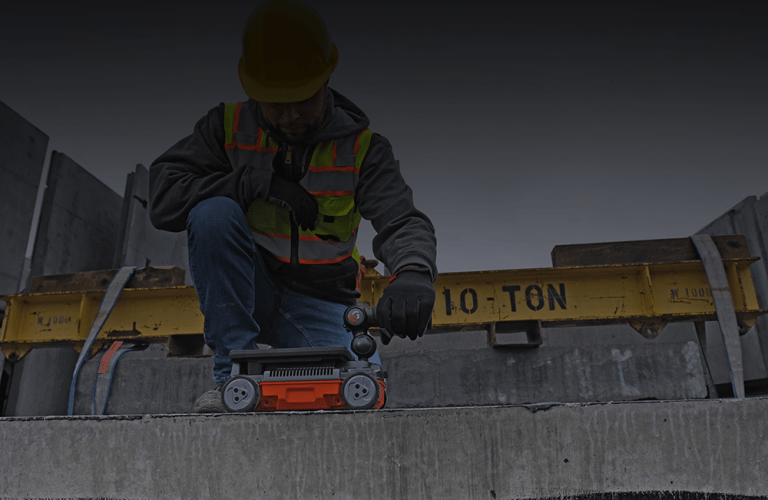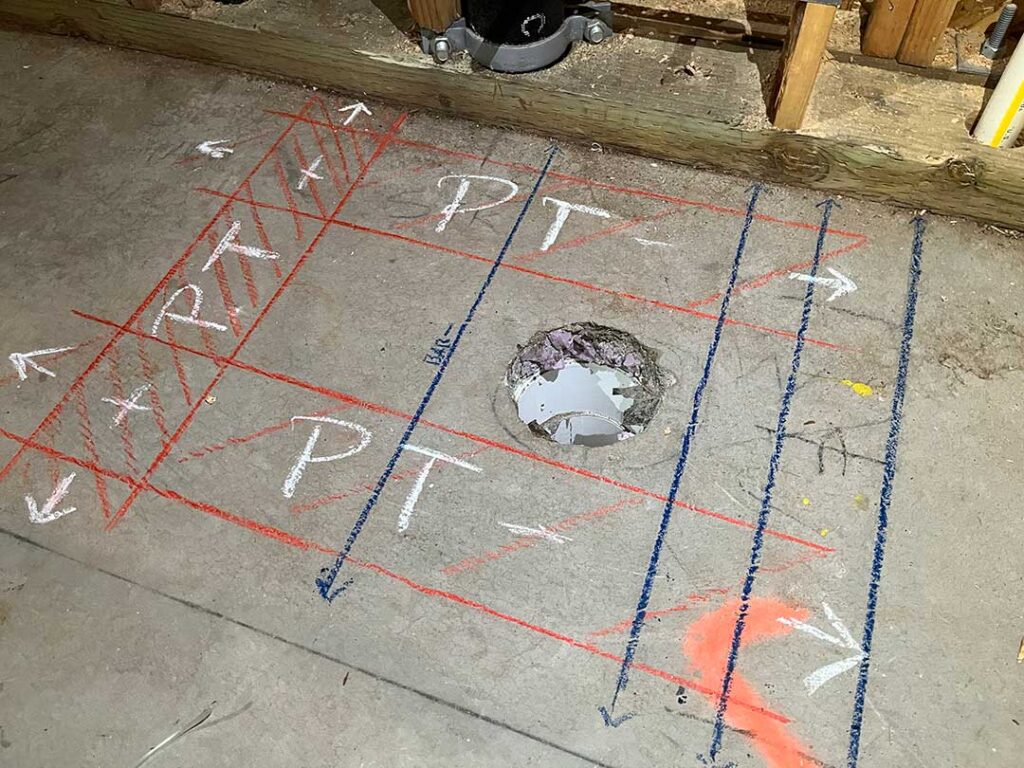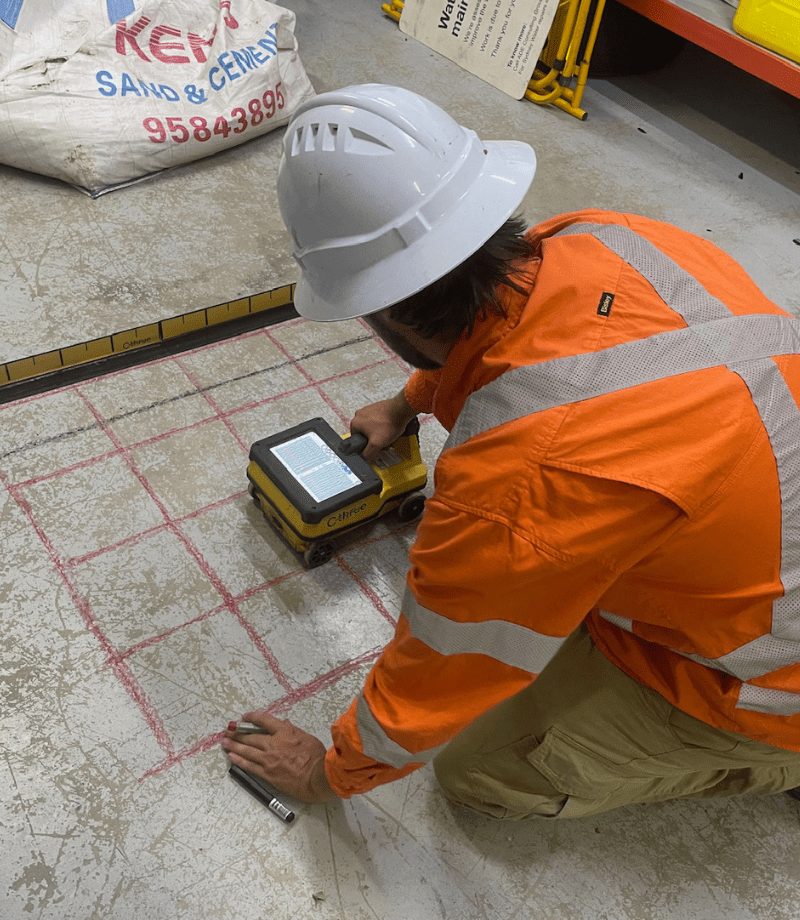Optimizing Efficiency and Decreasing Threats: The Duty of Concrete Scanning in Construction
In the world of building and construction, where precision and safety and security are extremely important, the usage of concrete scanning modern technology has actually become a crucial device for job supervisors and engineers alike. By harnessing innovative scanning approaches, construction teams can browse complicated environments with enhanced effectiveness while reducing potential risks that might threaten both budget plans and timelines. The elaborate dance in between maximizing efficiency and lessening threats in building joints on the capacity to peer beneath the surface, disclosing a world of covert barriers and possibilities. The duty of concrete scanning in this fragile equilibrium is not merely helpful yet transformative, supplying a glance into a future where pricey errors are preempted, security is prioritized, and high quality is non-negotiable.

Importance of Concrete Scanning
Concrete scanning plays a crucial function in guaranteeing the architectural stability and safety of building projects by accurately discovering ingrained items and prospective hazards within concrete structures. By using various scanning innovations such as ground-penetrating radar (GPR) and electromagnetic induction, building and construction groups can recognize rebar, post-tension cords, conduits, and other surprise obstacles prior to drilling, cutting, or coring into concrete. This positive method aids avoid pricey damages, injuries, and task delays that might occur from mistakenly striking these objects throughout building and construction activities.
Additionally, the precise mapping of embedded objects ensures the effective execution of building plans, decreasing the threat of mistakes and making sure the durability and durability of the constructed atmosphere. Ultimately, investing in concrete scanning solutions adds to the general success and safety of building and construction tasks.

Advanced Technology in Construction
Given the increasing need for precision and efficiency in building and construction practices, the combination of innovative modern technology has come to be instrumental in boosting task outcomes and making sure optimum safety procedures. BIM permits for far better collaboration among stakeholders, boosted visualization of the task, and boosted decision-making throughout the building procedure. The implementation of Enhanced Fact (AR) and Virtual Truth (VIRTUAL REALITY) modern technologies in building and construction layout and preparation stages enables stakeholders to envision the last item, identify prospective problems, and make essential adjustments before building begins.

Advantages of Item Mapping
The application of object mapping innovation in construction tasks provides a plethora of advantages that enhance task planning and execution. Among the vital advantages of things mapping is its capacity to supply precise and thorough details regarding the area of underground energies, structural components, and other objects within the building website. This information is essential for ensuring that excavation and boring activities are brought out safely and effectively, reducing the threat of damages to existing infrastructure.
In addition, things mapping innovation enables building and construction teams to create exact 3D wikipedia reference designs of the website, enabling better visualization of the project and boosted control amongst various trades - RainierGPR Concrete Scanning. This enhanced spatial understanding assists to identify prospective clashes and problems early in the drawing board, decreasing the need for costly rework and delays during building and construction
In addition, things mapping can also enhance the documents process by offering digital documents of the website before, during, and after building and construction. These records work as useful referrals for future upkeep and renovation projects, inevitably boosting the lasting performance and sustainability of the developed setting.
Avoiding Costly Mistakes
Object mapping modern technology's duty in construction prolongs beyond enhancing job preparation and implementation to encompass a vital element: preventing costly mistakes. By utilizing innovative concrete scanning techniques, construction teams can identify possible hazards such as rebar blockage, post-tension cords, or gaps within concrete structures. Generally, the aggressive usage of concrete scanning modern technologies in building and construction projects substantially decreases the risk of mistakes and ultimately adds to cost savings and job effectiveness.
Ensuring Safety and Top Quality
To promote the highest requirements of security and top quality in building jobs, the execution of concrete scanning innovation plays a pivotal role. By using innovative scanning techniques such as ground-penetrating radar (GPR) and electromagnetic induction, building groups can detect prospective threats concealed within concrete frameworks before starting any kind of work. This positive approach not just decreases the danger of crashes on the building site however likewise makes certain the architectural honesty of the structure.
Concrete scanning additionally aids in confirming the placement of rebar, avenues, and post-tension wires, guaranteeing that these components are properly placed based on the Get More Info style specifications. This precision in finding critical components helps stop errors throughout the construction procedure, ultimately resulting in a higher high quality ended up item. In addition, by identifying any type of abnormalities or inconsistencies within the concrete early, required modifications can be made immediately, minimizing the chance of rework and pricey delays.
In significance, concrete scanning modern technology acts as an important device in protecting both the security of building workers and the overall high quality of the constructed atmosphere. Its capacity to make certain and discover prospective threats adherence to layout standards makes it an indispensable property in contemporary building and construction practices.

Verdict
In final thought, concrete scanning plays an essential function in making the most of efficiency and minimizing threats in building and construction jobs. By utilizing innovative technology for object mapping, prospective costly errors can be prevented, ensuring safety and security and high quality of the final structure. It is essential for building business to focus on the use of concrete scanning to enhance performance, mitigate risks, and supply high-quality lead to their tasks.
Concrete scanning plays a crucial role in guaranteeing the architectural stability and safety of building and construction jobs by precisely identifying ingrained things and prospective risks within concrete frameworks. The execution of Enhanced Fact (AR) and Online Fact (VIRTUAL REALITY) modern technologies in building and construction layout and preparation phases enables stakeholders to visualize the final product, recognize prospective concerns, and make required changes before building starts. By using advanced have a peek at this site concrete scanning techniques, construction groups can recognize potential risks such as rebar congestion, post-tension cables, or gaps within concrete frameworks. Overall, the aggressive use of concrete scanning technologies in building and construction jobs considerably minimizes the danger of errors and inevitably contributes to cost savings and task efficiency.
To support the highest standards of security and top quality in building and construction jobs, the implementation of concrete scanning technology plays an essential function.
Comments on “RainierGPR Concrete Scanning: Advanced Solutions for Safe Building”